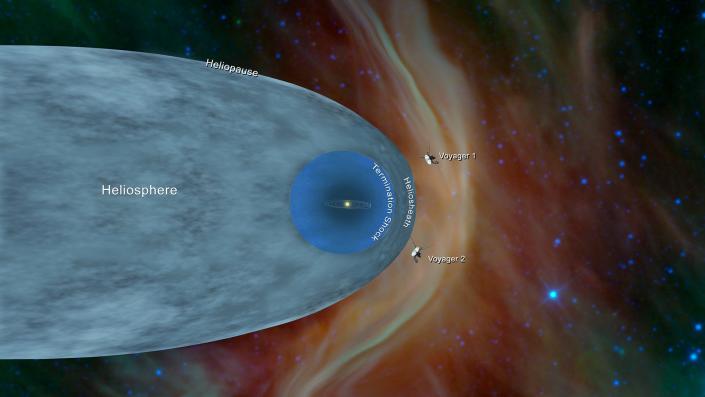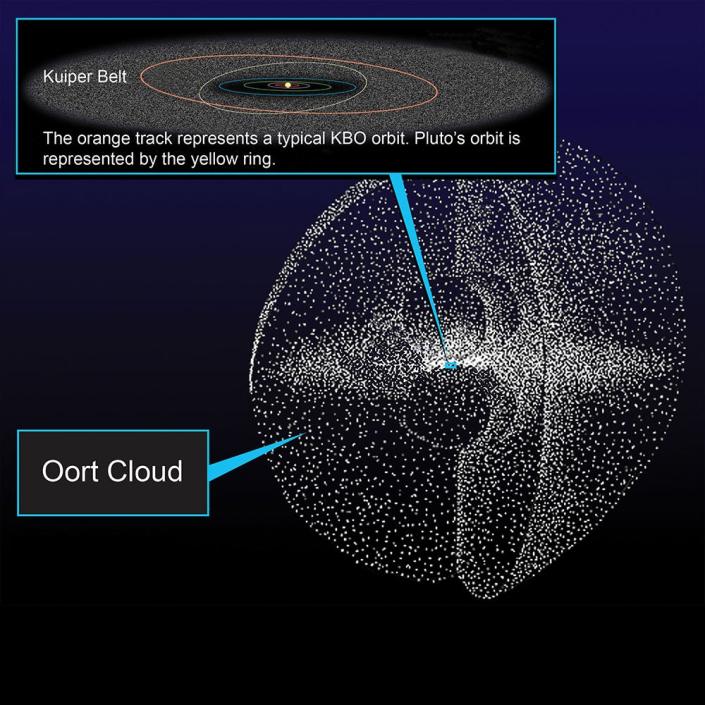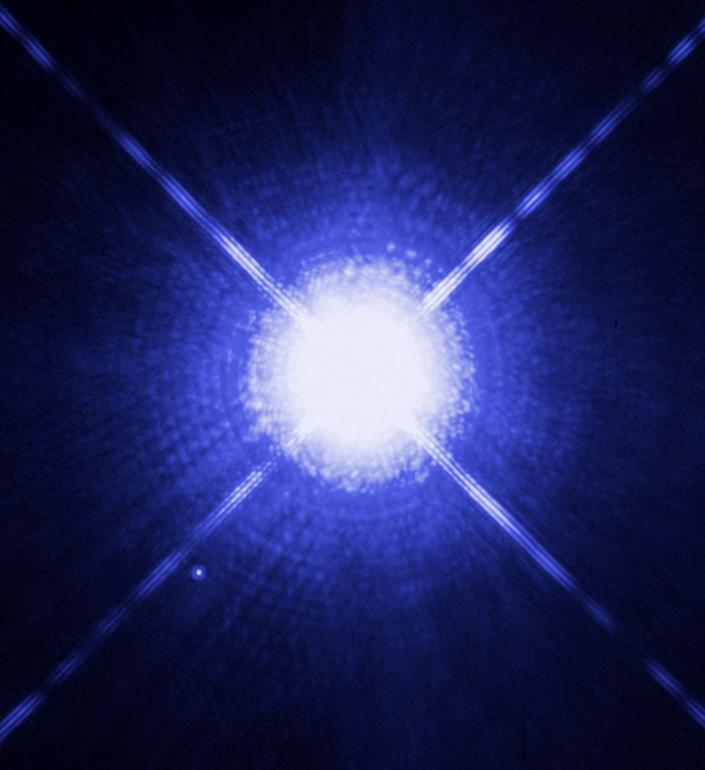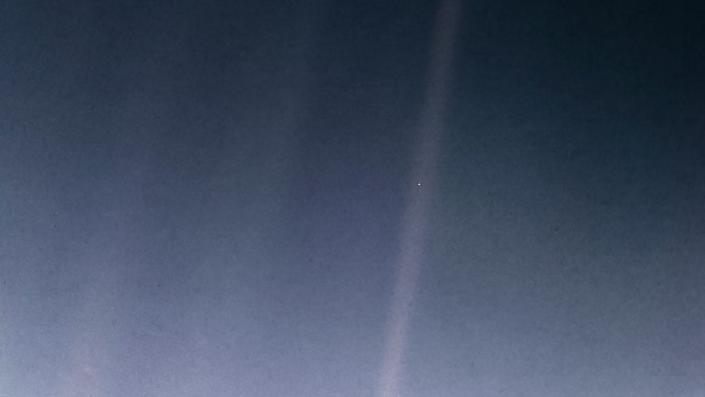-
Voyagers 1 and 2 are exploring the mysterious region between stars called interstellar space.
-
NASA launched the twin probes in 1977 for a five-year mission to trek across the solar system.
-
It should take Voyager 1 40,000 years to reach another star, according to the space agency.
Some 14.8 billion miles from Earth, the Voyager 1 probe is cruising through the blackness of the interstellar medium — the unexplored space between stars. It’s the furthest human-made object from our planet.
Voyager 1 and Voyager 2 launched in 1977 within 16 days of one another with a design lifetime of five years to study Jupiter, Saturn, Uranus, Neptune, and their respective moons up close.
Now 45 years into their mission, they’ve each made history by boldly venturing beyond the boundary of our sun’s influence, known as the heliopause.
Both plucky spacecraft continue to send data back from beyond the solar system — and their cosmic journeys are far from over.

In 300 years, Voyager 1 could see the Oort Cloud, and in 296,000 years, Voyager 2 could pass by Sirius
As part of an ongoing power-management effort that has ramped up in recent years, engineers have been powering down non-technical systems on board the Voyager probes, like their science-instruments heaters, hoping to keep them going through 2030.
After that, the probes will likely lose their ability to communicate with Earth.
Still, even after NASA shuts down their instruments and calls the Voyager mission to an end, the twin probes will continue to drift out in interstellar space.
NASA said that about 300 years from now, Voyager 1 should enter the Oort Cloud, a hypothetical spherical band full of billions of frozen comets. It should take another 30,000 years to reach the end of it.

The spacecraft are taking different paths as they head out into deep space. Voyager 2 is only about 12.3 billion miles away from Earth today.
It should take the Voyager 1 probe approximately 40,000 years to reach AC+79 3888, a star in the constellation Camelopardalis, according to NASA.
The agency added that in some 296,000 years, Voyager 2 should drift by Sirius, the brightest star in the sky.
“The Voyagers are destined — perhaps eternally — to wander the Milky Way,” NASA said.

‘It’s really remarkable that both spacecraft are still operating’
NASA designed the twin spacecraft to study the outer solar system. After completing their primary mission, the Voyagers kept chugging along, taking a grand tour of our solar system and capturing breathtaking cosmic views.
On February 14, 1990, the Voyager 1 spacecraft captured the “Pale Blue Dot” image from almost 4 billion miles away. It’s an iconic image of Earth within a scattered ray of sunlight, and it’s the farthest view of Earth any spacecraft has captured.

For the last decade, Voyager 1 has been exploring interstellar space, which is full of gas, dust, and charged energetic particles. Voyager 2 reached interstellar space in 2018, six years after its twin.
Their observations of the interstellar gas they’re moving through has revolutionized astronomers’ understanding of this unexplored space beyond our own cosmic backyard.
“It’s really remarkable that both spacecraft are still operating and operating well — little glitches, but operating extremely well and still sending back this valuable data,” Suzanne Dodd, the project manager for the Voyager mission at NASA’s Jet Propulsion Laboratory, previously told Insider, adding, “They’re still talking to us.”
Read the original article on Business Insider



